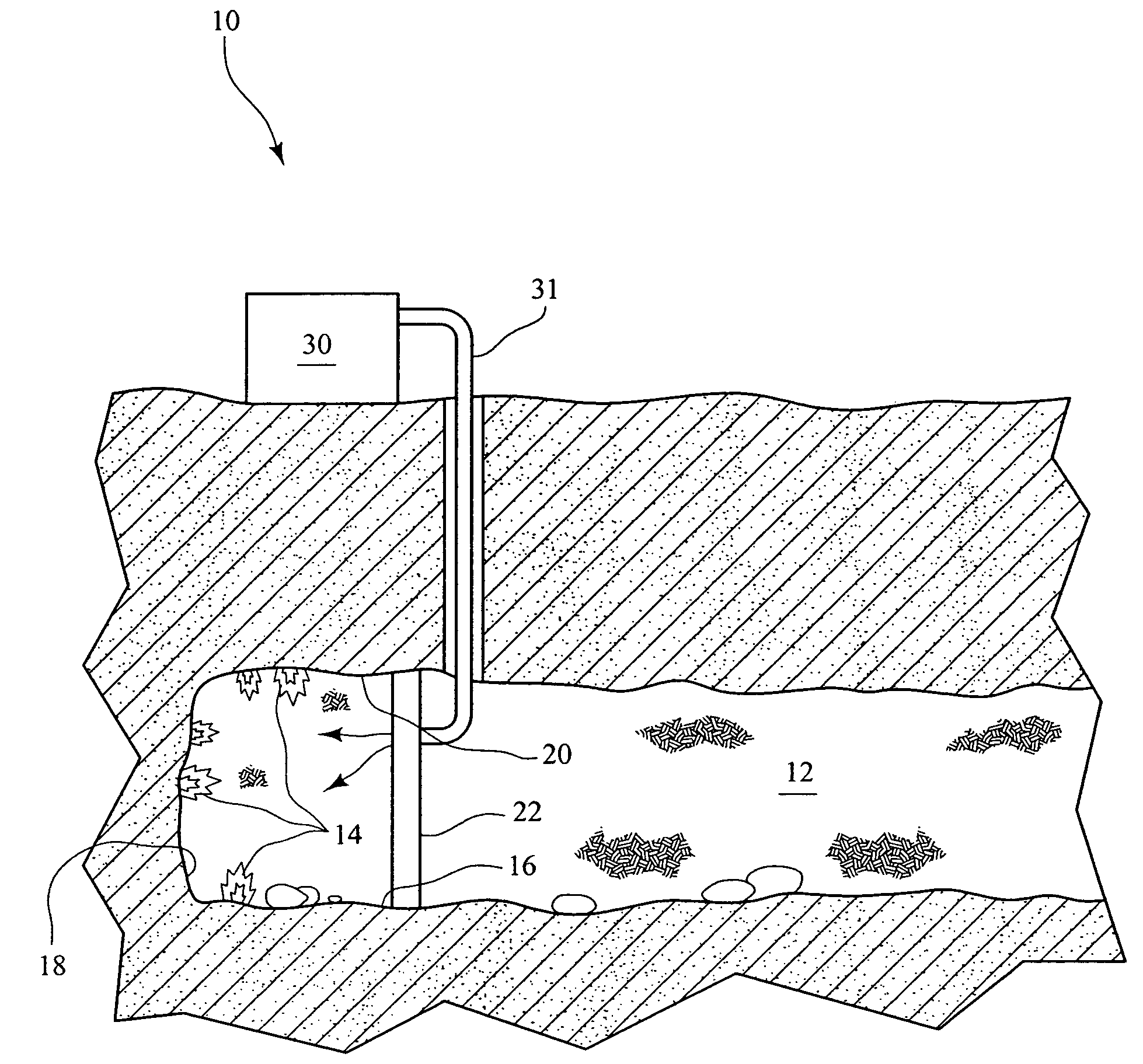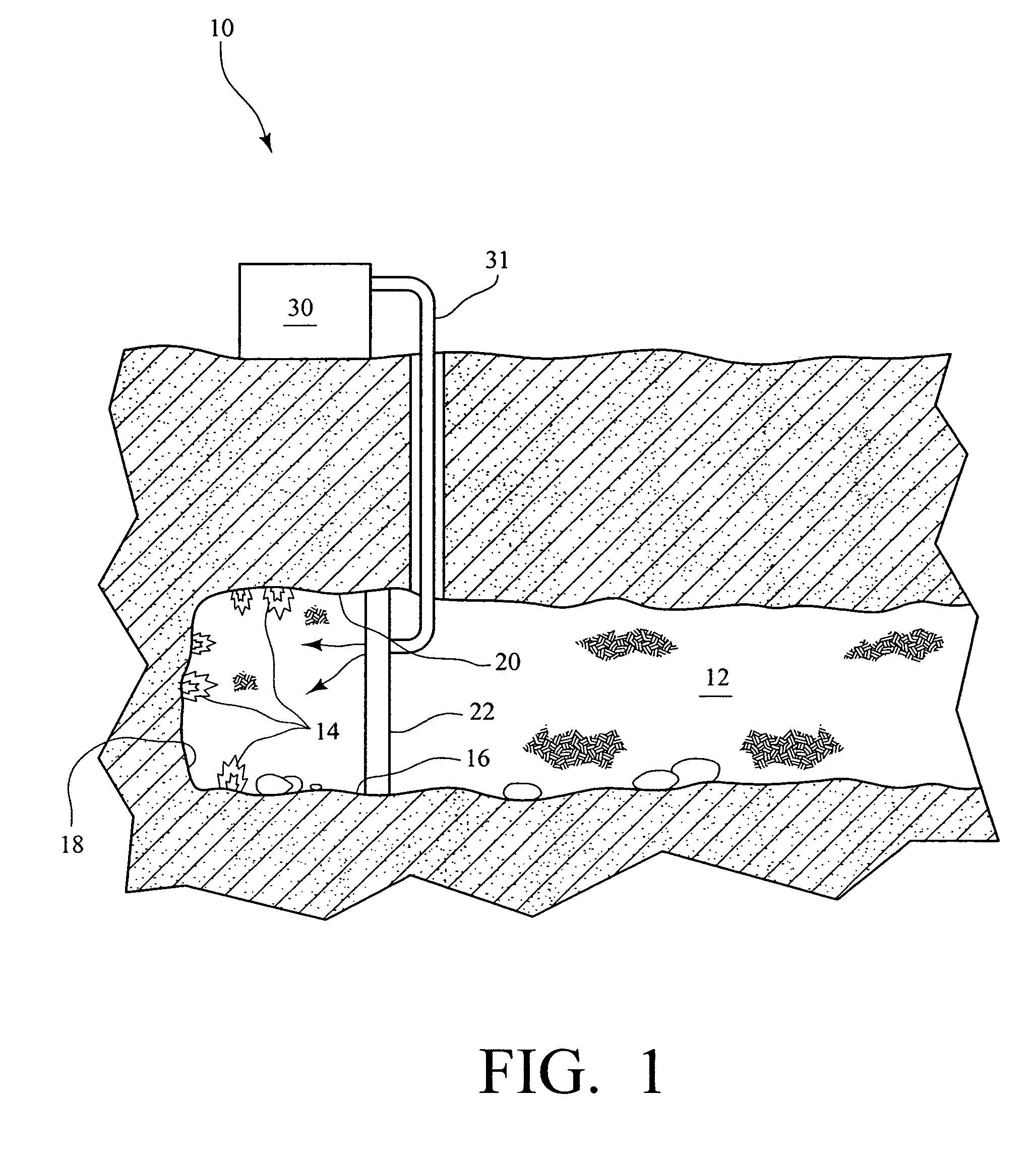Method for fighting fire in confined areas using nitrogen expanded foam
a technology of expanded foam and firefighting, which is applied in the direction of dust removal, dental surgery, lighting and heating apparatus, etc., can solve the problems of difficult fire extinguishing, difficult delivery of fire suppressant materials, and restricted hot combustion gases, so as to reduce the danger of explosion or flash fires
- Summary
- Abstract
- Description
- Claims
- Application Information
AI Technical Summary
Benefits of technology
Problems solved by technology
Method used
Image
Examples
example 1
[0041]The following is an example of the use of the method and apparatus of the present invention to extinguish a fire in an existing underground coal mine.
[0042]A roof fall behind two seals identified as Seals 6 and 8 on Level 1 of an underground coal mine was the probable cause of a fire started by spontaneous combustion. The fall provided the fuel and crated the atmosphere that was conducive to spontaneous combustion.
[0043]A rise in carbon monoxide concentrations at Seal No. 6 was found during a routine inspection. Once it was determined that the elevated carbon monoxide was not due to normal activities, all personnel, with the exception of those individuals allowed to repair seals and to collect samples were evacuated from the mine. For purposes of this example the sequence of events begins at day one with the evacuation.
[0044]By day four the site of the fire was located behind Seal No. 6. Installation of water injection pipes to Seal No. 6, as well as to Seal No. 8, began on da...
example 2
[0051]The following example illustrates another aspect of the invention in which the foam is expanded with nitrogen which has been chilled to a temperature below ambient. The combustible material involved in a coal fire normally has a surface temperature of about 1400° F. while involved in combustion. The fire suppressant / extinguishing material must both lower the temperature of the combustible material and smother it to prevent contact between it and oxygen or other fuels that may be present in the atmosphere surrounding the combustible material. The fire is considered to be extinguished when the surface temperature of the coal in the area involved has been educed to 90° F., a commonly accepted safe temperature determined by the Pennsylvania Department of Environmental Protection.
[0052]The rate of reduction of the surface temperature of burning coal is reduced radically when contacted by nitrogen expanded foam. However, it was determined that as the surface temperature of the coal ...
PUM
 Login to View More
Login to View More Abstract
Description
Claims
Application Information
 Login to View More
Login to View More - R&D
- Intellectual Property
- Life Sciences
- Materials
- Tech Scout
- Unparalleled Data Quality
- Higher Quality Content
- 60% Fewer Hallucinations
Browse by: Latest US Patents, China's latest patents, Technical Efficacy Thesaurus, Application Domain, Technology Topic, Popular Technical Reports.
© 2025 PatSnap. All rights reserved.Legal|Privacy policy|Modern Slavery Act Transparency Statement|Sitemap|About US| Contact US: help@patsnap.com



